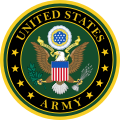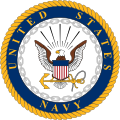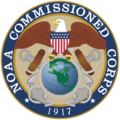- The White House, the seat of the president of the United States in Washington, D.C.. The president is the commander-in-chief of the U.S. Armed Forces.
- The United States Department of Defense headquarters at the Pentagon in Washington, D.C. USDOD coordinating and supervising the six U.S. armed services: the Army, Navy, Marines, Air Force, Space Force, and the Coast Guard.
- Central Intelligence Agency (CIA) headquarters at the George Bush Center for Intelligence in Langley, Virginia. CIA collecting and analyzing intelligence from around the world and conducting covert operations.
- North Atlantic Treaty Organization (NATO) headquarters in Brussels, Belgium. The United States is the leading power in the world's most powerful military alliance.

This is an index of lists detailing military conflicts involving the United States, organized by time period. Although the United States has formally declared war only five times and these declarations cover a total of 11 separate instances against specific nations, there are currently 193 non-colonial military conflicts included in these lists, eight of which are ongoing. Between all six lists, there are currently 230 military conflicts. [1]
Contents
Formal declarations of war include the War of 1812 (United Kingdom), the Mexican–American War (Mexico), the Spanish–American War (Spain), World War I (Germany and Austria-Hungary) and World War II (Japan, Germany, Italy, Bulgaria, Hungary and Romania). [2]
Since World War II, the U.S. has engaged in numerous military operations authorized by Congress or initiated by the executive branch without formal declarations of war; notable examples include the Cold War (the Korean War, the Vietnam War, and the Gulf War) and the war on terror (the war in Afghanistan, the Iraq War, the second Iraq War, and the Syria War).
As of the current date, the United States is involved in 8 publicly known military engagements across 5 different wars. Wars with direct U.S. involvement include war on terror (Nigeria, Somalia, Syria, and Yemen), and the war on drugs (U.S. military campaign). Wars with indirect U.S. involvement include the Russo-Ukrainian War (U.S. involvement), the Gaza War (U.S. involvement), and the Israel–Hezbollah conflict. [Note 1]





















